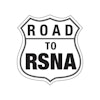Sunday, November 26 | 1:10 p.m.-1:20 p.m. | S4-SSCH02-2 | Room N228
The U.S. Preventive Services Task Force's (USPSTF) 2021 lung cancer screening (LCS) guidelines appear to promote earlier diagnosis of smoking-related malignancies, according to Harvard researchers.
The USPSTF's 2021 guidelines expanded the pool of individuals eligible for lung cancer screening by lowering both the start age and number of pack years. A team led by Valeria Pena-Trujillo, MD, of Harvard Medical School and Massachusetts General Hospital, both in Boston, sought to determine if the updated guidance helped clinicians find lung cancer sooner.
The group identified 7,720 patients who underwent baseline low-dose CT (LDCT) exams between April 2021 and December 2022 as part of a lung cancer screening program. The team tracked sociodemographic information such as patients' sex, race, ethnic group, language, and zip code, as well as and clinical characteristics such as smoking status, Lung-RADS score, and the presence of any other interstitial lung diseases. Patients included were eligible for lung cancer screening under either the 2013 or the 2021 USPSTF guidelines (1,539 and 727 patients, respectively); mean age at screening under the 2013 guidance was 64 years and under the 2021 guidance, 57 years.
The investigators found that, under the 2021 recommendation, individuals who underwent lung cancer screening had lower percentages of Lung-RADS 3 and 4 scores compared with those screened under the 2013 recommendation (8% vs. 9.4% and 5.2% vs. 8%, respectively), as well as higher percentages of Lung-RADS 1 and 2 scores (12.5% vs. 11.1% and 74.3% vs. 71.3%, respectively).
"Our results suggest that the eligibility-criteria expansion of the new USPSTF lung cancer screening guidelines may promote earlier detection of smoking-related lung malignancies," the group concluded.





